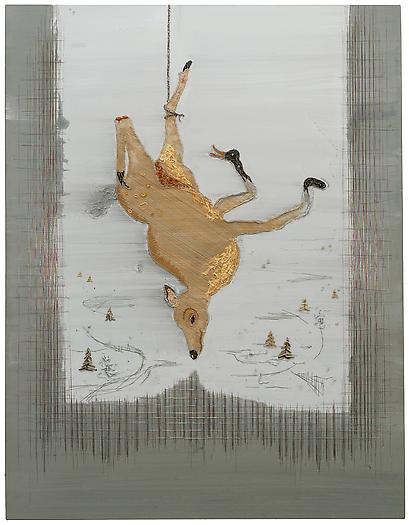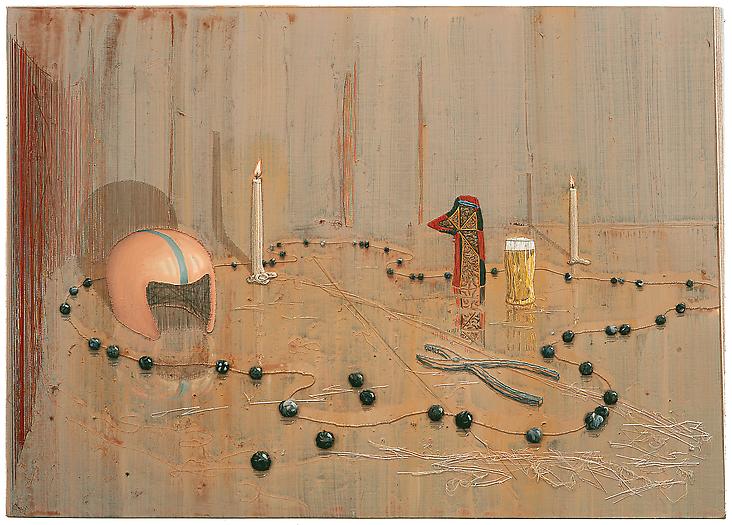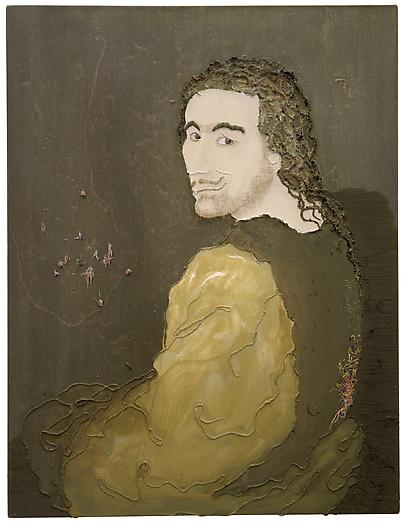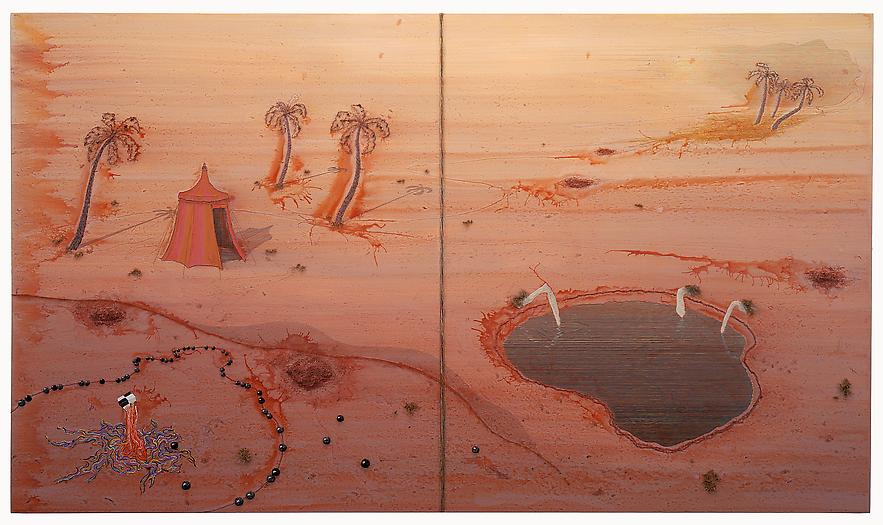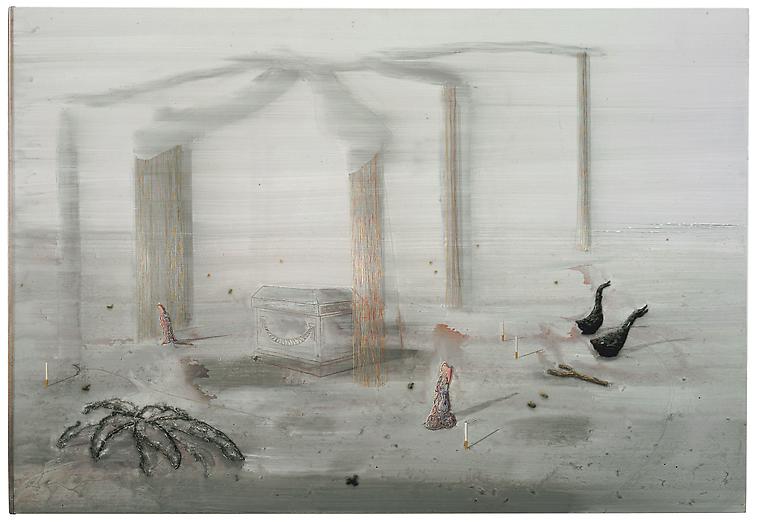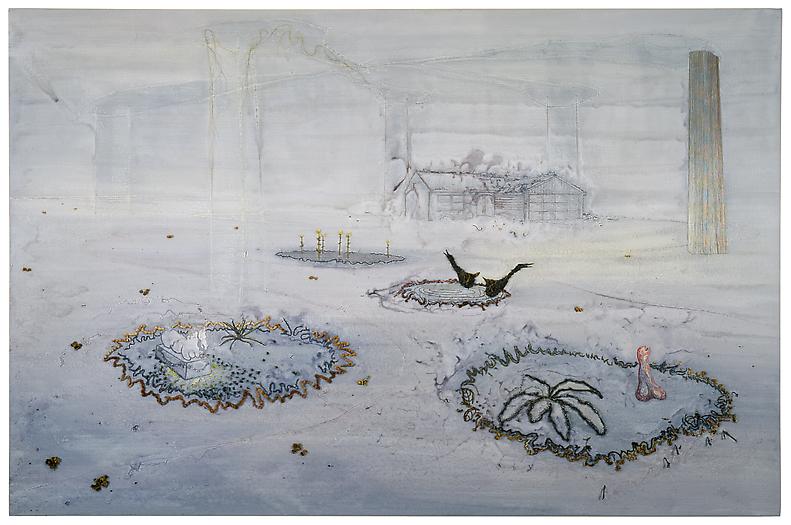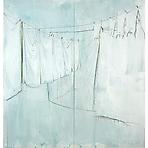Michael Raedecker
that's the way it is
May 14 – June 28, 2003
Main Gallery
I'm looking outside, trying to look inside.
Trying to say something that's true.
But maybe nothing is really true.
Except what's out there.
And what's out there is always changing. - Robert Frank
Paint lies in thin washes, it drips and runs or curdles in thick pools, and coils in wormcasts through holes in the canvas. In Raedecker's hands his signature materials, thread and yarn, demonstrate an equal versatility. Thread stands in for the drawn or painted line, creating the first framework of the picture, and also supplies the final flourishes of detail. It can create illusion, describing light, shadow or reflections, but elsewhere declares its own material substance in a thick woolly knot or matted web.
In the past, Raedecker's landscapes and interiors seemed to be located in an unspecific but familiar suburbia of modernist architecture, though their atmosphere was distinctly unsettling, and the surreal a constant undercurrent. Now, as some hotter pinks and oranges infuse his steely northern palette, and here and there exotic palms appear instead of poplars, the tug of the surreal is becoming more insistent. Though we recognize the genres - landscape, portrait, still life - Raedecker confounds our expectations of scale and perspective. In the broad spaces of his surreal landscapes, earth and sky are undifferentiated by any horizon – though in one the image is bisected by a thread as if to suggest the spread pages of a book. It is left for us to dream our own stories around the elements which float there, each casting its own crisp shadow; a Moorish tent, a family of strange forms which seem to bend and drink at an oasis, and a roiling mass of embroidery signaling some strange disturbance of matter encroaching on the scene.
The surreal emerges most strongly of all in the incongruous meeting of familiar objects (a cigarette, a pint of beer), others impossible to identify, and isolated details in thread which seem to have the status of objects. All seem equally invested with a mysterious, almost magical significance. Those which we learn to recognize from one painting to the next seem particularly charged: the checkered cube, the black duck-like creatures, and the string of woolen balls are recurring protagonists whose role we can only guess at. Raedecker keeps our perception constantly shifting between the image and the sensuous surface dramas of paint and thread – dramas which take center-stage in the smaller abstract works which punctuate the show.
These scenes and images leave room for our own speculation and fantasy; even their carefully oblique titles only suggest further possible narratives. Raedecker creates a world in which to escape, but one which also makes us see our own afresh. As when we escape into a film or experience a dream, this world has its own strange logic and rightness - after all, that's just the way it is.
Michael Raedecker was born in Amsterdam in 1963 and studied at the Rijksakademie, Amsterdam, and Goldsmiths College, London. He has lived and worked in London since 1996 and was nominated for Britain's prestigious Turner Prize in 2000. This year his solo exhibition ‘instinction' traveled from Centro nazionale per le arti contemporanee in Rome to the Museum fur Gegenwartskunst, Basel; the accompanying catalogue is available from the gallery.
